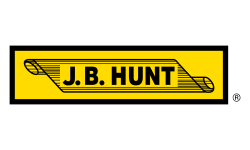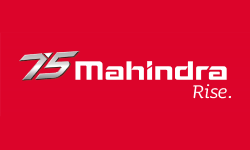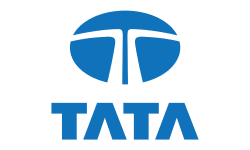
Global Vacuum Deaerators Market by Type (High Pressure Type, Low Pressure Type), By Application (Food Industry, Non-food Industry) and Region (North America, Latin America, Europe, Asia Pacific and Middle East & Africa), Forecast To 2028
The Global Vacuum Deaerators Market size is expected to grow from USD 4.6 billion in 2021 to USD 5.9 billion by 2028, at a CAGR of 3.8% during the forecast period. The major factors driving this growth are high demand for this equipment across industries such as the food and non-food industry and growing awareness about hygiene among consumers which leads to greater adoption of vacuum deaerators in various applications globally.
The vacuum deaerators are used to remove the air content from liquids, gas, and solids. A vacuum deaerator is also known as a high-pressure type of low-pressure type depending on its operating principle. This equipment uses either a centrifugal separation process (i.e, high-pressure) or a heat transfer process (low-pressured). The vacuum deaerators can be utilized in various applications across industries such as the food and non-food industry which leads to higher demand for this equipment globally.
On the basis of Types, the market is segmented into high-pressure type and low-pressure type. The high-pressure vacuum deaerators are more used in the food industry than in non-food industries due to greater hygiene among consumers which leads to higher adoption in various applications globally.
High-Pressure Vacuum Deaerators:
High-pressure vacuum deaerators are more used in the food industry than in non-food industries. These equipment use either a centrifugal separation process or a heat transfer process to remove the air from their gas flow which is led by higher demand globally.
Low-Pressure Vacuum Deaerators:
Low-pressure vacuum deaerators are more used in the non-food industries. These equipment use a vapor transfer process to remove the air from their gas flow which is led by demand for this type of equipment globally rising.
On the basis of Application, the market is segmented into the food industry and non-food industry.
Food Industry:
The food industry is one of the major application areas for vacuum deaerators. Deaerating food can prevent a variety of problems, such as spoilage caused by aerobic bacteria and yeast, oxidation that produces unpleasant flavors in foods like meat or eggs, and formation of hydrogen sulfide (H²S) gas which causes “rotten egg” odor. Vacuum deaerators are used to remove air from packaged goods before sealing them to keep their contents fresh longer. They also retain valuable nutrients and create an environment where the growth of microorganisms will be inhibited by removing the oxygen through condensation at lower temperatures than normal atmospheric pressure without heating it up during processing with heat sterilization methods found in other preservation techniques such as retorting or cooking.
Non-Food Industry:
Vacuum deaerators are used in many non-food applications. The most common is water treatment for pools, lakes, and industrial process systems where dissolved gases need to be removed from the liquid under pressure. Vacuum decomposition of carbonaceous materials with other products such as tar acids, amines, or hydrocarbons can also use them to remove oxygen prior to distillation processes. A good example would be coal gasification processing which produces a lot of CO? that needs to be separated out before further chemical reactions can take place at higher temperatures. Liquefaction refining facilities produce gasoline but it contains significant amounts of residual nitrogen requiring removal by means such as vacuum stripping or carbonylation. In these cases, not only do the high-temperature thermal processes require removal of oxygen but also the CO? and H from the product.
On the basis of Region, the market is segmented into North America, Latin America, Europe, and the Asia Pacific. North America is the leading region in this market due to the presence of abundant natural resources such as raw materials for the production of vacuum deaerators.
Western Europe accounted for the largest share of the global low-pressure vacuum degasser market due to the presence of several leading manufacturers of low-pressure vacuum degassers in the region.
Asia-Pacific is projected to be the fastest-growing market for Vacuum Deaerator globally and it will dominate this segment by mid-2028 due to its presence in a large number of food processing industries like seafood, meat & poultry, dairy products, etc., which needs this equipment on a regular basis.
North America accounted for the second-largest share followed by the Asia Pacific and Latin American regions respectively in 2017. North America is expected to witness growth with increasing demand from non-food industries during the forecast period whereas Europe would register steady revenue expansion owing to rising adoption rates among various countries including France, Greece Italy, etc.
Growth Factors For The vacuum Deaerators Market:
There are many growth factors driving the global vacuum deaerators market. Some of these include increasing demand for the food industry and non-food industry, to increase efficiency in the production process, rising economic development & income levels across emerging economies such as India and China. This is also has led to a rise in disposable incomes which would lead to increased spending on products that enhance the quality of life (such as vacuum cleaners).
The global vacuum deaerators market is also witnessing an increase in the adoption of automation across industries to reduce costs and improve production efficiency. Additionally, with advances in technology, newer models are coming out which meet higher energy efficient standards (such as reducing CO emissions).
Up Market Research published a new report titled “Vacuum Deaerators Market research report which is segmented by Types (High Pressure Type, Low Pressure Type), By Applications (Food Industry, Non-food Industry), By Players/Companies FrymaKoruma, Krones, GEA Group, JBT Corporation, Veolia Water Technologies, Bono”.
Report Scope
| Report Attributes | Report Details |
| Report Title | Vacuum Deaerators Market Research Report |
| By Type | High Pressure Type, Low Pressure Type |
| By Application | Food Industry, Non-food Industry |
| By Companies | FrymaKoruma, Krones, GEA Group, JBT Corporation, Veolia Water Technologies, Bono |
| Regions Covered | North America, Europe, APAC, Latin America, MEA |
| Base Year | 2020 |
| Historical Year | 2018 to 2019 (Data from 2010 can be provided as per availability) |
| Forecast Year | 2028 |
| Number of Pages | 229 |
| Number of Tables & Figures | 161 |
| Customization Available | Yes, the report can be customized as per your need. |
The report covers comprehensive data on emerging trends, market drivers, growth opportunities, and restraints that can change the market dynamics of the industry. It provides an in-depth analysis of the market segments which include products, applications, and competitor analysis.

Global Vacuum Deaerators Market Report Segments:
The market is segmented by Type High Pressure Type, Low Pressure Type and By Application Food Industry, Non-food Industry.
Some of the companies that are profiled in this report are:
- FrymaKoruma
- Krones
- GEA Group
- JBT Corporation
- Veolia Water Technologies
- Bono
Vacuum Deaerators Market research report delivers a close watch on leading competitors with strategic analysis, micro and macro market trend and scenarios, pricing analysis and a holistic overview of the market situations in the forecast period. It is a professional and a detailed report focusing on primary and secondary drivers, market share, leading segments and geographical analysis. Further, key players, major collaborations, merger & acquisitions along with trending innovation and business policies are reviewed in the report.
Key Benefits for Industry Participants & Stakeholders:
- Industry drivers, restraints, and opportunities covered in the study
- Neutral perspective on the market performance
- Recent industry trends and developments
- Competitive landscape & strategies of key players
- Potential & niche segments and regions exhibiting promising growth covered
- Historical, current, and projected market size, in terms of value
- In-depth analysis of the Vacuum Deaerators Market
Overview of the regional outlook of the Vacuum Deaerators Market:
Based on region, the market is segmented into North America, Europe, Asia Pacific, Latin America and Middle East & Africa (MEA). North America region is further bifurcated into countries such as U.S., and Canada. The Europe region is further categorized into U.K., France, Germany, Italy, Spain, Russia, and Rest of Europe. Asia Pacific is further segmented into China, Japan, South Korea, India, Australia, South East Asia, and Rest of Asia Pacific. Latin America region is further segmented into Brazil, Mexico, and Rest of Latin America, and the MEA region is further divided into GCC, Turkey, South Africa, and Rest of MEA.

Highlights of The Vacuum Deaerators Market Report:
- The market structure and projections for the coming years.
- Drivers, restraints, opportunities, and current trends of Vacuum Deaerators Market.
- Historical data and forecast.
- Estimations for the forecast period 2028.
- Developments and trends in the market.
- By Type:
1. High Pressure Type
2. Low Pressure Type
7. By Application:1. Food Industry
2. Non-food Industry
- Market scenario by region, sub-region, and country.
- Market share of the market players, company profiles, product specifications, SWOT analysis, and competitive landscape.
- Analysis regarding upstream raw materials, downstream demand, and current market dynamics.
- Government Policies, Macro & Micro economic factors are also included in the report.
We have studied the Vacuum Deaerators Market in 360 degrees via. both primary & secondary research methodologies. This helped us in building an understanding of the current market dynamics, supply-demand gap, pricing trends, product preferences, consumer patterns & so on. The findings were further validated through primary research with industry experts & opinion leaders across countries. The data is further compiled & validated through various market estimation & data validation methodologies. Further, we also have our in-house data forecasting model to predict market growth up to 2028.
How you may use our products:
- Correctly Positioning New Products
- Market Entry Strategies
- Business Expansion Strategies
- Consumer Insights
- Understanding Competition Scenario
- Product & Brand Management
- Channel & Customer Management
- Identifying Appropriate Advertising Appeals

Reasons to Purchase the Vacuum Deaerators Market Report:
- The report includes a plethora of information such as market dynamics scenario and opportunities during the forecast period
- Segments and sub-segments include quantitative, qualitative, value (USD Million,) and volume (Units Million) data.
- Regional, sub-regional, and country level data includes the demand and supply forces along with their influence on the market.
- The competitive landscape comprises share of key players, new developments, and strategies in the last three years.
- Comprehensive companies offering products, relevant financial information, recent developments, SWOT analysis, and strategies by these players.
Chapter 2 Assumptions and Acronyms Used
Chapter 3 Research Methodology
Chapter 4 Vacuum Deaerators Market Overview
4.1 Introduction
4.1.1 Market Taxonomy
4.1.2 Market Definition
4.1.3 Macro-Economic Factors Impacting the Market Growth
4.2 Vacuum Deaerators Market Dynamics
4.2.1 Market Drivers
4.2.2 Market Restraints
4.2.3 Market Opportunity
4.3 Vacuum Deaerators Market - Supply Chain Analysis
4.3.1 List of Key Suppliers
4.3.2 List of Key Distributors
4.3.3 List of Key Consumers
4.4 Key Forces Shaping the Vacuum Deaerators Market
4.4.1 Bargaining Power of Suppliers
4.4.2 Bargaining Power of Buyers
4.4.3 Threat of Substitution
4.4.4 Threat of New Entrants
4.4.5 Competitive Rivalry
4.5 Global Vacuum Deaerators Market Size & Forecast, 2018-2028
4.5.1 Vacuum Deaerators Market Size and Y-o-Y Growth
4.5.2 Vacuum Deaerators Market Absolute $ Opportunity
Chapter 5 Global Vacuum Deaerators Market Analysis and Forecast by Type
5.1 Introduction
5.1.1 Key Market Trends & Growth Opportunities by Type
5.1.2 Basis Point Share (BPS) Analysis by Type
5.1.3 Absolute $ Opportunity Assessment by Type
5.2 Vacuum Deaerators Market Size Forecast by Type
5.2.1 High Pressure Type
5.2.2 Low Pressure Type
5.3 Market Attractiveness Analysis by Type
Chapter 6 Global Vacuum Deaerators Market Analysis and Forecast by Applications
6.1 Introduction
6.1.1 Key Market Trends & Growth Opportunities by Applications
6.1.2 Basis Point Share (BPS) Analysis by Applications
6.1.3 Absolute $ Opportunity Assessment by Applications
6.2 Vacuum Deaerators Market Size Forecast by Applications
6.2.1 Food Industry
6.2.2 Non-food Industry
6.3 Market Attractiveness Analysis by Applications
Chapter 7 Global Vacuum Deaerators Market Analysis and Forecast by Region
7.1 Introduction
7.1.1 Key Market Trends & Growth Opportunities by Region
7.1.2 Basis Point Share (BPS) Analysis by Region
7.1.3 Absolute $ Opportunity Assessment by Region
7.2 Vacuum Deaerators Market Size Forecast by Region
7.2.1 North America
7.2.2 Europe
7.2.3 Asia Pacific
7.2.4 Latin America
7.2.5 Middle East & Africa (MEA)
7.3 Market Attractiveness Analysis by Region
Chapter 8 Coronavirus Disease (COVID-19) Impact
8.1 Introduction
8.2 Current & Future Impact Analysis
8.3 Economic Impact Analysis
8.4 Government Policies
8.5 Investment Scenario
Chapter 9 North America Vacuum Deaerators Analysis and Forecast
9.1 Introduction
9.2 North America Vacuum Deaerators Market Size Forecast by Country
9.2.1 U.S.
9.2.2 Canada
9.3 Basis Point Share (BPS) Analysis by Country
9.4 Absolute $ Opportunity Assessment by Country
9.5 Market Attractiveness Analysis by Country
9.6 North America Vacuum Deaerators Market Size Forecast by Type
9.6.1 High Pressure Type
9.6.2 Low Pressure Type
9.7 Basis Point Share (BPS) Analysis by Type
9.8 Absolute $ Opportunity Assessment by Type
9.9 Market Attractiveness Analysis by Type
9.10 North America Vacuum Deaerators Market Size Forecast by Applications
9.10.1 Food Industry
9.10.2 Non-food Industry
9.11 Basis Point Share (BPS) Analysis by Applications
9.12 Absolute $ Opportunity Assessment by Applications
9.13 Market Attractiveness Analysis by Applications
Chapter 10 Europe Vacuum Deaerators Analysis and Forecast
10.1 Introduction
10.2 Europe Vacuum Deaerators Market Size Forecast by Country
10.2.1 Germany
10.2.2 France
10.2.3 Italy
10.2.4 U.K.
10.2.5 Spain
10.2.6 Russia
10.2.7 Rest of Europe
10.3 Basis Point Share (BPS) Analysis by Country
10.4 Absolute $ Opportunity Assessment by Country
10.5 Market Attractiveness Analysis by Country
10.6 Europe Vacuum Deaerators Market Size Forecast by Type
10.6.1 High Pressure Type
10.6.2 Low Pressure Type
10.7 Basis Point Share (BPS) Analysis by Type
10.8 Absolute $ Opportunity Assessment by Type
10.9 Market Attractiveness Analysis by Type
10.10 Europe Vacuum Deaerators Market Size Forecast by Applications
10.10.1 Food Industry
10.10.2 Non-food Industry
10.11 Basis Point Share (BPS) Analysis by Applications
10.12 Absolute $ Opportunity Assessment by Applications
10.13 Market Attractiveness Analysis by Applications
Chapter 11 Asia Pacific Vacuum Deaerators Analysis and Forecast
11.1 Introduction
11.2 Asia Pacific Vacuum Deaerators Market Size Forecast by Country
11.2.1 China
11.2.2 Japan
11.2.3 South Korea
11.2.4 India
11.2.5 Australia
11.2.6 South East Asia (SEA)
11.2.7 Rest of Asia Pacific (APAC)
11.3 Basis Point Share (BPS) Analysis by Country
11.4 Absolute $ Opportunity Assessment by Country
11.5 Market Attractiveness Analysis by Country
11.6 Asia Pacific Vacuum Deaerators Market Size Forecast by Type
11.6.1 High Pressure Type
11.6.2 Low Pressure Type
11.7 Basis Point Share (BPS) Analysis by Type
11.8 Absolute $ Opportunity Assessment by Type
11.9 Market Attractiveness Analysis by Type
11.10 Asia Pacific Vacuum Deaerators Market Size Forecast by Applications
11.10.1 Food Industry
11.10.2 Non-food Industry
11.11 Basis Point Share (BPS) Analysis by Applications
11.12 Absolute $ Opportunity Assessment by Applications
11.13 Market Attractiveness Analysis by Applications
Chapter 12 Latin America Vacuum Deaerators Analysis and Forecast
12.1 Introduction
12.2 Latin America Vacuum Deaerators Market Size Forecast by Country
12.2.1 Brazil
12.2.2 Mexico
12.2.3 Rest of Latin America (LATAM)
12.3 Basis Point Share (BPS) Analysis by Country
12.4 Absolute $ Opportunity Assessment by Country
12.5 Market Attractiveness Analysis by Country
12.6 Latin America Vacuum Deaerators Market Size Forecast by Type
12.6.1 High Pressure Type
12.6.2 Low Pressure Type
12.7 Basis Point Share (BPS) Analysis by Type
12.8 Absolute $ Opportunity Assessment by Type
12.9 Market Attractiveness Analysis by Type
12.10 Latin America Vacuum Deaerators Market Size Forecast by Applications
12.10.1 Food Industry
12.10.2 Non-food Industry
12.11 Basis Point Share (BPS) Analysis by Applications
12.12 Absolute $ Opportunity Assessment by Applications
12.13 Market Attractiveness Analysis by Applications
Chapter 13 Middle East & Africa (MEA) Vacuum Deaerators Analysis and Forecast
13.1 Introduction
13.2 Middle East & Africa (MEA) Vacuum Deaerators Market Size Forecast by Country
13.2.1 Saudi Arabia
13.2.2 South Africa
13.2.3 UAE
13.2.4 Rest of Middle East & Africa (MEA)
13.3 Basis Point Share (BPS) Analysis by Country
13.4 Absolute $ Opportunity Assessment by Country
13.5 Market Attractiveness Analysis by Country
13.6 Middle East & Africa (MEA) Vacuum Deaerators Market Size Forecast by Type
13.6.1 High Pressure Type
13.6.2 Low Pressure Type
13.7 Basis Point Share (BPS) Analysis by Type
13.8 Absolute $ Opportunity Assessment by Type
13.9 Market Attractiveness Analysis by Type
13.10 Middle East & Africa (MEA) Vacuum Deaerators Market Size Forecast by Applications
13.10.1 Food Industry
13.10.2 Non-food Industry
13.11 Basis Point Share (BPS) Analysis by Applications
13.12 Absolute $ Opportunity Assessment by Applications
13.13 Market Attractiveness Analysis by Applications
Chapter 14 Competition Landscape
14.1 Vacuum Deaerators Market: Competitive Dashboard
14.2 Global Vacuum Deaerators Market: Market Share Analysis, 2019
14.3 Company Profiles (Details – Overview, Financials, Developments, Strategy)
14.3.1 FrymaKoruma
14.3.2 Krones
14.3.3 GEA Group
14.3.4 JBT Corporation
14.3.5 Veolia Water Technologies
14.3.6 Bono
The global Vacuum Deaerators market has been segmented based on
By Types
- High Pressure Type
- Low Pressure Type
- Food Industry
- Non-food Industry
- Asia Pacific
- North America
- Latin America
- Europe
- Middle East & Africa
- FrymaKoruma
- Krones
- GEA Group
- JBT Corporation
- Veolia Water Technologies
- Bono
Related Reports
Some other reports from this category!




















